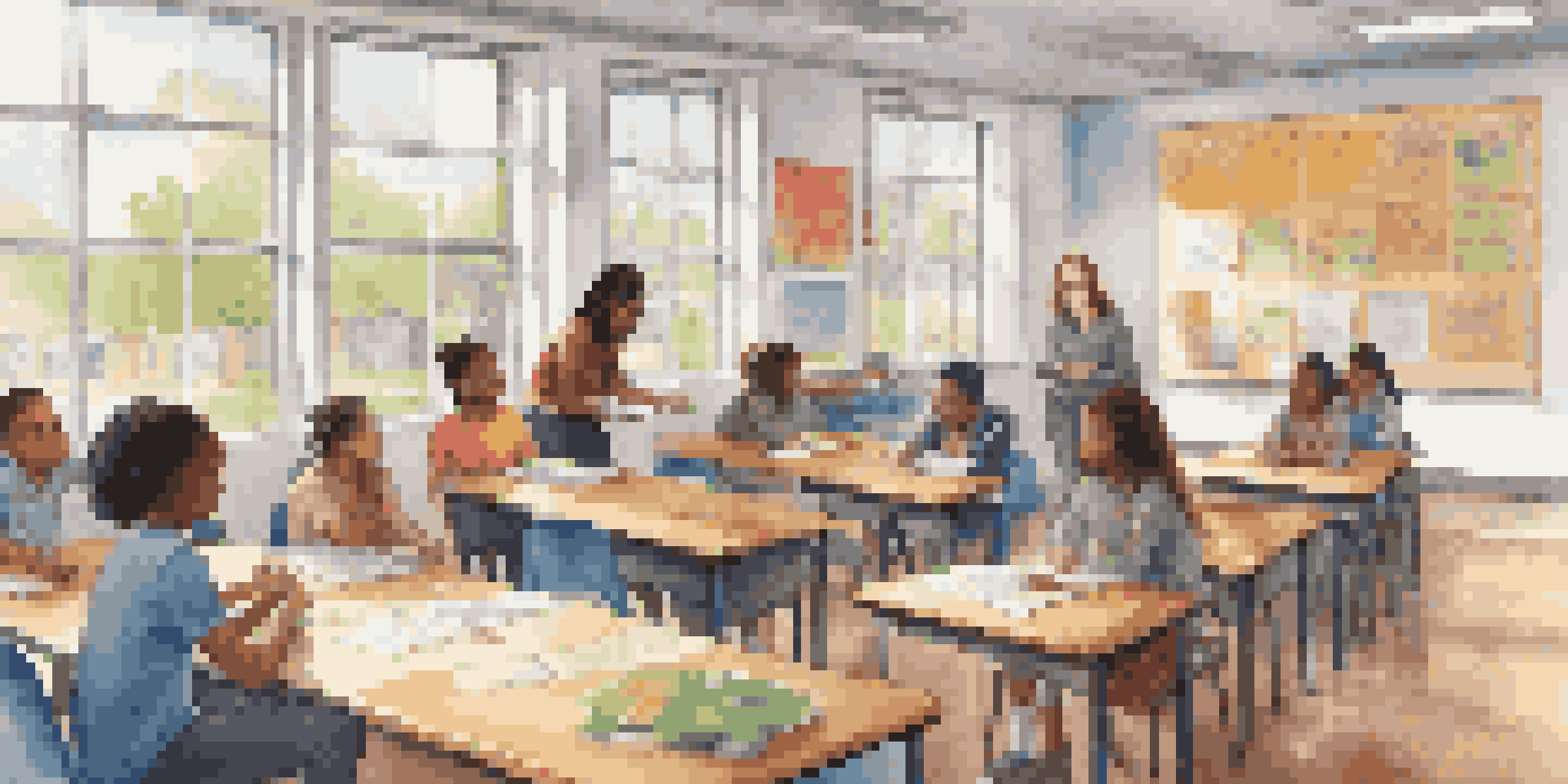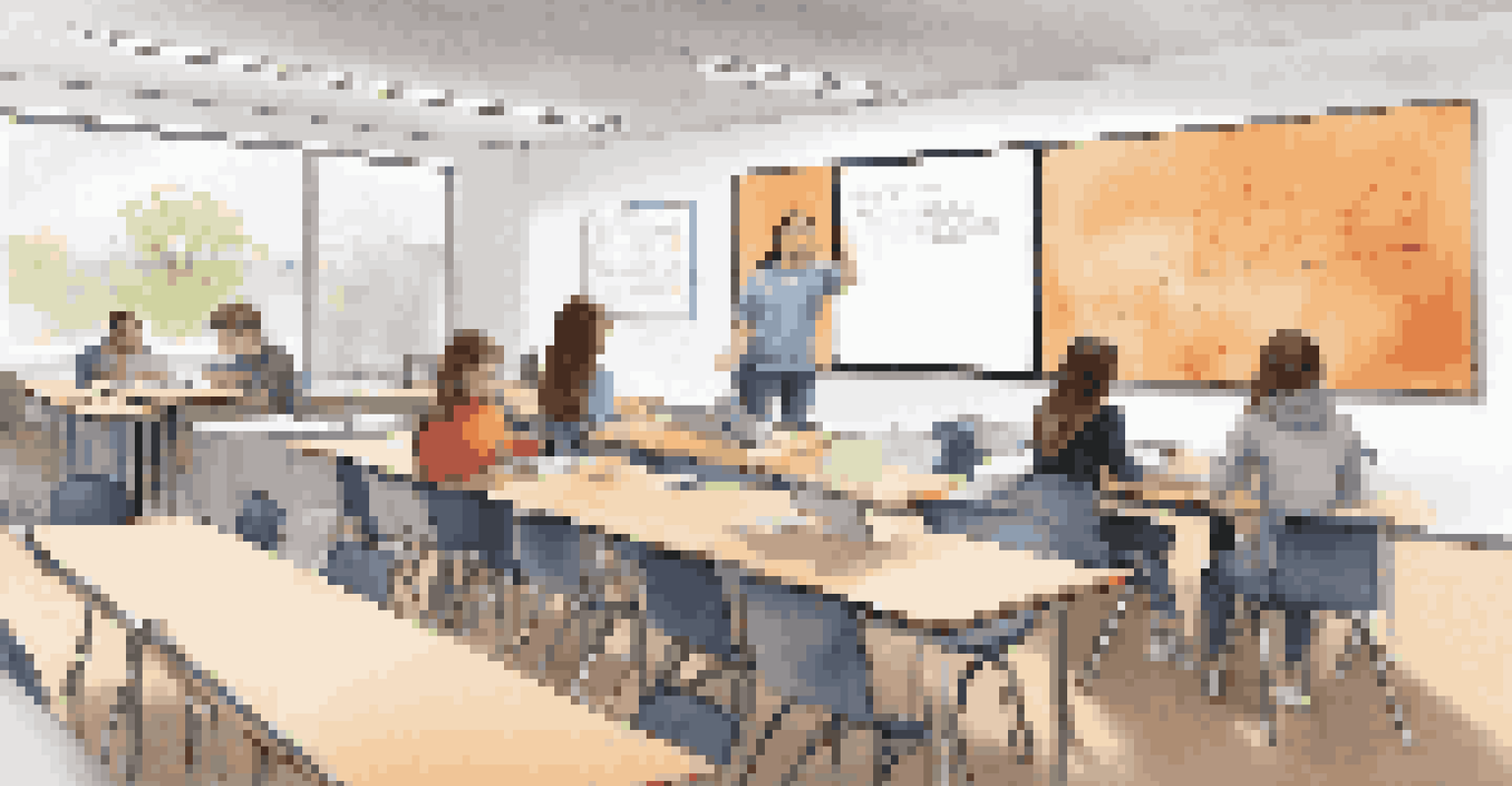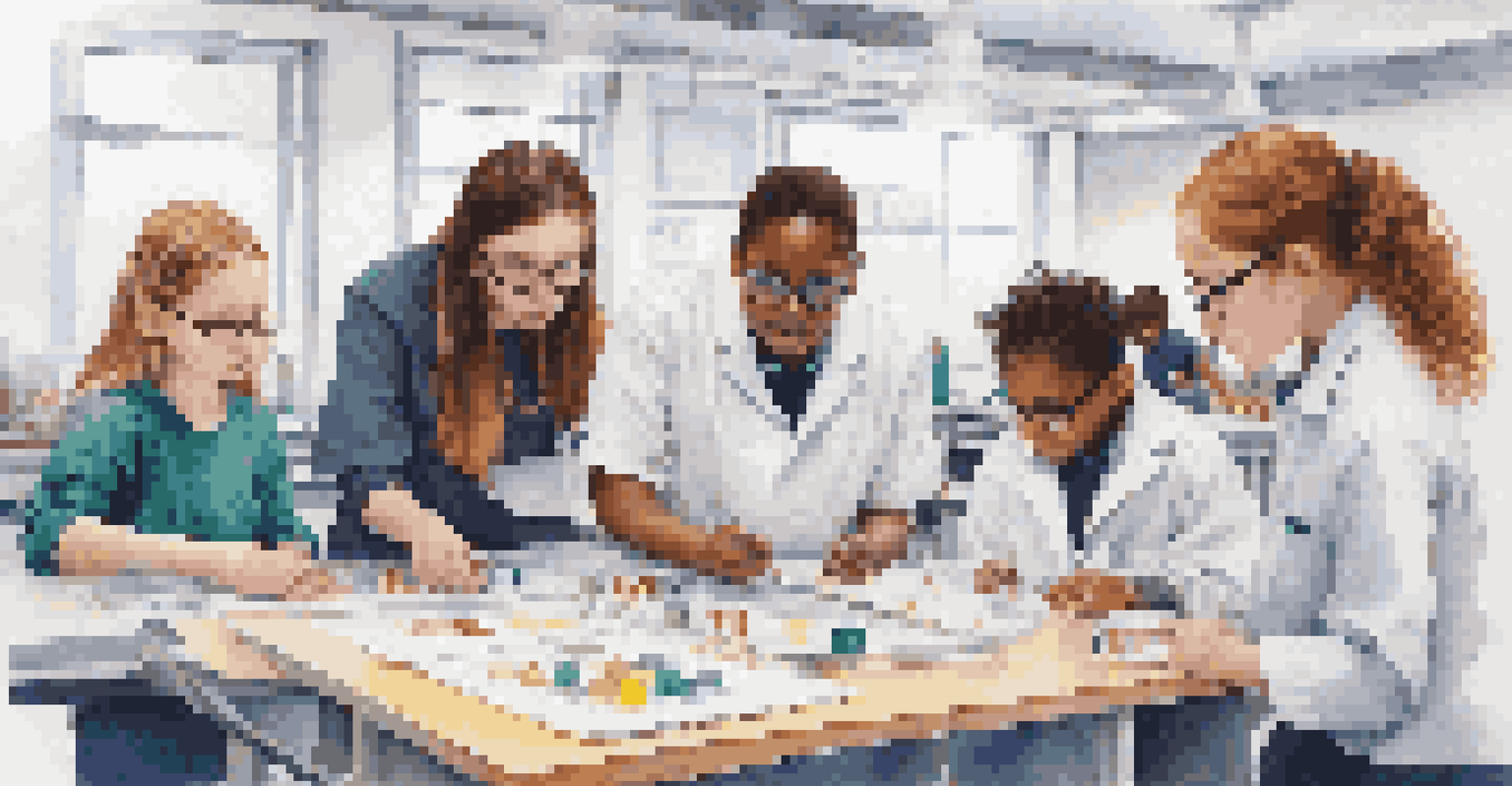Personalized Learning and the Role of Curriculum Adaptation

Understanding Personalized Learning in Education
Personalized learning is an educational approach tailored to individual student needs. It recognizes that each learner has unique strengths, weaknesses, and interests, making a one-size-fits-all model ineffective. By focusing on the individual, educators can create more engaging and effective learning experiences.
Personalized learning is not just a strategy; it's a mindset that acknowledges the uniqueness of every learner.
This method often employs technology, allowing students to learn at their own pace and style. For instance, a student struggling with math might use interactive software that adapts to their skill level, providing targeted practice. Such customization not only boosts understanding but also enhances confidence.
Moreover, personalized learning encourages student agency, giving learners a voice in their educational journey. They can set goals, choose topics of interest, and explore subjects deeply, fostering a love for learning that traditional methods may not ignite.
The Importance of Curriculum Adaptation
Curriculum adaptation is crucial for the success of personalized learning. It involves modifying course content to meet the diverse needs of students, ensuring everyone has access to the same learning opportunities. This flexibility allows educators to respond to various learning styles, abilities, and interests.

An effective curriculum should not be static; it must evolve based on student feedback and performance. For example, if a class is excelling in a subject, the curriculum can be adjusted to introduce more advanced concepts. Conversely, if students struggle, the material can be simplified or revisited.
Personalized Learning Tailors Education
Personalized learning adapts to individual student needs, creating more engaging and effective educational experiences.
Adaptation also includes incorporating different teaching methods, such as project-based learning or collaborative activities. By diversifying instructional strategies, teachers can engage students more effectively and promote deeper understanding.
Leveraging Technology for Personalized Learning
Technology plays a significant role in personalizing education. Digital tools such as learning management systems and educational apps provide data-driven insights into student performance. This information allows educators to tailor their teaching strategies and interventions accordingly.
Education is not the filling of a pail, but the lighting of a fire.
For instance, platforms like Khan Academy enable students to learn at their own pace, offering personalized exercise recommendations based on their progress. This approach not only helps students grasp concepts better but also allows teachers to monitor growth effectively.
Additionally, technology facilitates communication and collaboration among students, teachers, and even parents. By utilizing online forums or messaging tools, all parties can stay informed and engaged in the learning process, creating a supportive educational environment.
Creating a Student-Centered Learning Environment
A student-centered learning environment fosters personalization and adaptation. In such settings, learners are encouraged to take ownership of their education, leading to increased motivation and engagement. Teachers act as facilitators, guiding students rather than dictating the learning process.
Classroom activities should be designed to promote exploration and critical thinking. For example, instead of traditional lectures, educators can implement discussions, group projects, or hands-on experiments that allow students to actively participate in their learning.
Curriculum Adaptation is Essential
Adapting the curriculum based on student feedback ensures that diverse learning styles and abilities are accommodated.
This approach not only caters to different learning styles but also helps develop essential skills such as problem-solving and collaboration. By prioritizing student agency and participation, educators can create a more inclusive and effective learning experience.
The Role of Assessment in Personalized Learning
Assessment is a vital component of personalized learning, as it helps identify individual strengths and areas for improvement. Traditional assessments often fail to capture a student's true abilities, but personalized assessments can provide a clearer picture. These may include portfolios, self-assessments, or formative assessments that offer ongoing feedback.
With adaptive assessment tools, educators can tailor questions based on a student's previous answers, ensuring that each student is challenged appropriately. This approach not only enhances the accuracy of assessments but also keeps students engaged and motivated.
Furthermore, ongoing assessments allow for timely interventions, ensuring that students receive the support they need when they need it. By aligning assessment strategies with personalized learning goals, educators can create a more effective and responsive educational experience.
Building Collaborative Learning Communities
Collaboration is a cornerstone of personalized learning and curriculum adaptation. By fostering a sense of community among students, educators can create an environment where learners support one another. This collaboration enhances social skills and promotes a deeper understanding of the material.
Group projects, peer-to-peer tutoring, and collaborative discussions encourage students to share perspectives and learn from each other. For instance, when students work together on a science experiment, they not only deepen their understanding of the subject but also learn valuable teamwork skills.
Collaboration Enhances Learning
Building collaborative learning communities fosters peer support and enriches the overall educational experience.
Moreover, collaboration extends beyond the classroom. Involving parents and community members in the learning process can provide additional resources and support, enriching the educational experience for students. This holistic approach emphasizes the importance of community in fostering personalized learning.
Challenges and Solutions in Implementing Personalized Learning
While personalized learning offers numerous benefits, it also presents challenges. One significant hurdle is the need for adequate training and resources for educators. Without proper support, teachers may struggle to implement personalized strategies effectively, leading to inconsistent results.
Another challenge is ensuring equitable access to technology, as not all students have the same resources. Schools must work to bridge this digital divide, providing necessary tools and support to all learners. This might include offering devices, internet access, or training on how to use educational technology effectively.

Ultimately, addressing these challenges requires a collaborative effort among educators, administrators, and the community. By sharing best practices and resources, schools can create a more effective personalized learning environment that benefits every student.